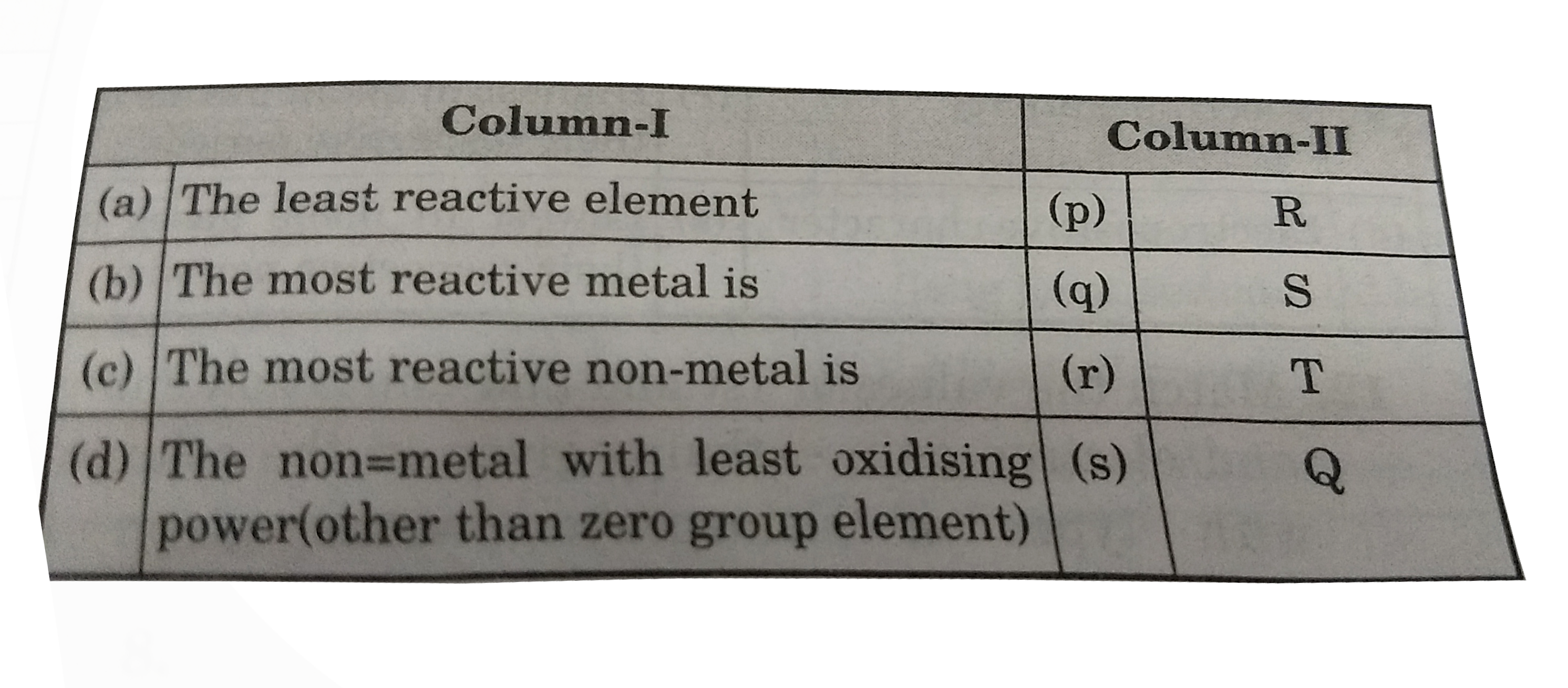Construct a Born-Haber cycle and use it to calculate the first electron affinity of chlorine.
ΔHa→m(CI)=+122kJmol−1 ΔHa→m(Mg)=+148kJmol−1
ΔH1st ionisation energy(Mg)=+738KJmol−1 ΔH2nd ionisation cnergy(MgCI2)=+1451kJmol−1
ΔHlattice energy (MgCI2)=−2526kJmol−1 ΔH2nd formation (MgCI2)=−641kJmol−1 Solution in Telugu
-348 kJ/mol
Similar Questions
Given C_(2)H_(2)(g)+H_(2)(g)rarrC_(2)H_(4)(g): DeltaH^(@)=-175 " kJ mol"^(-1) DeltaH_(f(C_(2)H_(4),g))^(@)=50 " kJ mol"^(-1), DeltaH_(f(H_(2)O,l))^(@)=-280 " kJ mol"^(-1), DeltaH_(f(CO_(2)g))^(@)=-390 " kJ mol"^(-1) If DeltaH^(@) is enthalpy of combustion (in kJ "mol"^(-1) ) of C_(2)H_(2) (g), then calculate the value of |(DeltaH^(@))/(257)|
View SolutionBond energies of H−HandCl−Cl are 430 kJ mol−1 and 242 kJ mol−1 respectively. ΔHf for HCl is 91 kJ mol−1.
What will be the bond energy of H−Cl?
View SolutionThe sucessive ionisation energy values for an element X are given below:
a) 1st ionisation energy=410kJmol−1 b)2nd ionisation energy=820kJmol−1
c) 3rd ionisation energy = 1100kJmol−1 d) 4th ionisation energy = 1500 kJmol−1
5th ionisation energy=3200kJmol−1
Find out the number of valence electron for the atom, X:
View SolutionGiven the following information
A−(g)→A2+(g)+3e− ΔH1=1400kJmol−1
A(g)→A2+(aq)+2e− ΔH2=700kJmol−1
ΔHeg[A+(g)]=−350kJmol−1
where ΔHeg is electron gain enthalpy.
(IE1+IE2) for A(g)=950kJmol−1
The value of ΔHeg of A2+(g)in kJmol−1is
View SolutionGiven the following information A^(-)(g) to A^(2+)(g) + 3e^(-) " " DeltaH_1 = 1400 kJ mol^(-1) A(g) to A^(2+)(aq) + 2e^(-) " " DeltaH_2 = 700 kJ mol^(-1) DeltaH_(eg)[A^(+)(g)] = -350kJ mol^(-1) where DeltaH_(eg) is electron gain enthalpy. The DeltaH_("hydration") of A^(2+) (g) in kJ mol^(-1) is
View SolutionFrom the following information
A−(g)→A+2(g)+3e−ΔH1=1400kJ/moleA(g)→A+2(aq)+2e−ΔH2=700kJ/moleΔHEG[A+(g)]=−350kJ/mol(IE1+IE2)forA(g)=950kJ/mol Find
(a) IE1 of A (b) IE2 of A (c) ΔHEG of A (d) ΔHHE of A^(2+)(g)
View SolutionThe first (ΔH1) and second (ΔH2) ionisation enthalpies (in kJmol−1) and the (ΔHeg) electron gain enthalpy (in kJmol−1) of a elements are given below:

Based on the above information match the following columns.

View Solution
